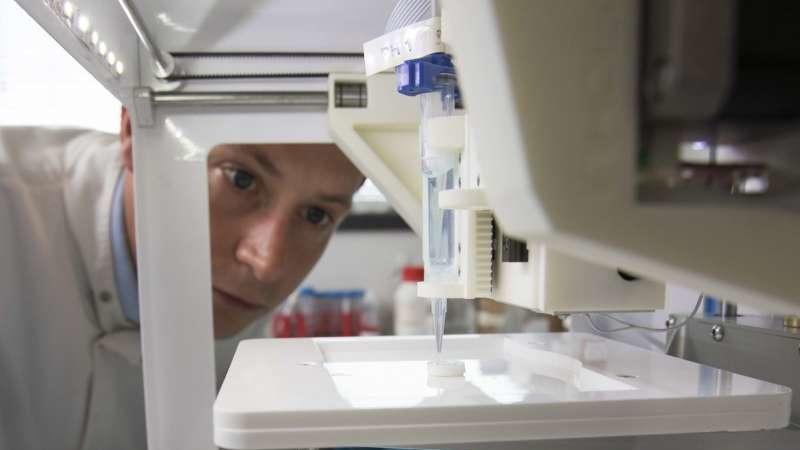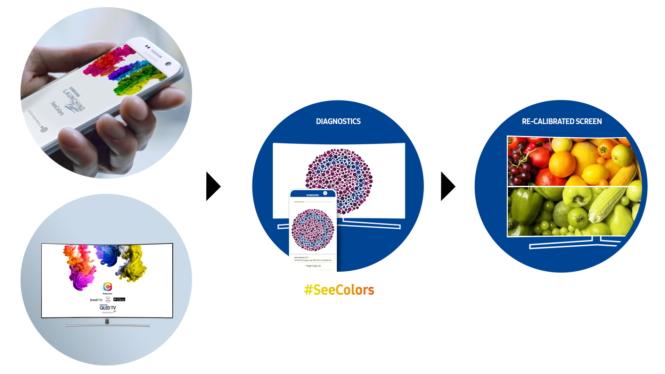eyesight
Latest

Tencent adds age-based playtime limits to ‘League of Legends’ in China
In the face of pressure from the Chinese government, Tencent and Riot Games have added age-based time limits to League of Legends in China, Polygon reports. Minors now get booted from the game after two hours of play, and the companies use China's national ID numbers -- which are used to make accounts -- to verify ages. Supposedly, the new rules are an attempt to curb gaming addiction.

Subaru’s Forester combines driver monitoring tech with outdoor style
The boxy Subaru Forester (starting at $24,295) has grown over the years. From a station wagon beset with right angles to an SUV with a tall interior that's got enough room for even the largest Golden Retriever or Labrador. Reviewing this car without a friendly pooch seems very un-Subaru but I'll make do since I don't need a canine and the car keeping an eye on me while I drive.

Scientists create the first 3D-printed human corneas
Newcastle University researchers have devised a groundbreaking experimental technique that could help millions on the corneal transplant waiting list. By using a simple 3D bio-printer, Professor of Tissue Engineering Che Connon and his team of scientists were able to combine healthy corneal stem cells with collagen and alginate (a type of sugar sometimes used in tissue regeneration) to create 'bio-ink' -- a printable solution that enabled them to reproduce the shape of a human cornea in just 10 minutes.

The new Subaru Forester can tell if you're sleepy or distracted
Subaru isn't exactly known for developing emerging technologies for its vehicles, so we'll bet you'd never expect the automaker to equip the 2019 Forester with facial-recognition technology. But that's exactly what it did -- Subaru has announced at the New York International Auto Show that it developed a feature for the vehicle that uses facial recognition to detect driver fatigue and distraction. "DriverFocus" comes as a standard feature for the most expensive Touring version of the vehicle, though it's unclear if you can pay extra to have it installed on another model.

Subaru’s Crosstrek is a small but value-packed SUV
Subaru sells emotion. Their entire marketing strategy is about "love," which is actually a pretty accurate take on how we buy cars. There's very little logic in a lot of our buying decisions. Consider how much time some of us spend in our vehicles -- there's nothing wrong with picking an automobile that gives you some sense of happiness. That's led to a rise in SUV sales, because big cars make Americans happy. Seeing the market for SUV grow while not having one its own to sell, Subaru introduced the Crosstrek, a crossover that will appeal to buyers looking for an all-wheel drive in a big (but not too big) package.

Samsung made an app that adjusts its TVs for color blindness
Samsung has launched an app that makes watching TV a more vibrant experience for people with color vision deficiency (CVD) -- the inability to distinguish certain shades of color (also known as color blindness). Through the SeeColors app, users can test their visual color spectrum, and based on their unique diagnosis their QLED TV will adjust settings to give a more accurate color display (something a number of video games have been working on for a while, too).

Samsung Gear VR app provides help to the visually impaired
Samsung isn't just using VR headsets as a means of boosting phone sales. The company's C-Lab has launched Relumino, a Gear VR app that uses augmented reality to compensate for vision problems. It can magnify the picture or adjust the contrast of what you're looking at if it's just a question of clarity, but it can also remap your field of view (to deal with blind spots or tunnel vision), outline objects and filter colors.

Flat microscope for the brain could help restore lost eyesight
You'd probably prefer that doctors restore lost sight or hearing by directly repairing your eyes and ears, but Rice University is one step closer to the next best thing: transmitting info directly to your brain. It's developing a flat microscope (the creatively titled FlatScope) that sits on your brain to both monitor and trigger neurons modified to be fluorescent when active. It should not only capture much more detail than existing brain probes (the team is hoping to see "a million" neurons), but reach levels deep enough that it should shed light on how the mind processes sensory input. And that, in turn, opens the door to controlling sensory input.

Retinal implant could add years to your eyesight
Scientists have been struggling to fight retinal degeneration in an elegant way. The most practical solution so far involves external devices that send wires to the back of your eyes. There might be a much more graceful approach before long, however. Researchers have developed an implant whose light-sensitive material could at least partially restore retinas and preserve your eyesight. Their invention combines a biocompatible substance (in this case, silk) with a conductive polymer and an organic semiconductor to send electricity to nerve cells whenever the implant is subjected to typical environmental light. Previous attempts at photovoltaic devices like this have required either exceptionally bright light or unusual light wavelengths to work, so this would be far more practical in the real world.

Gesture control is coming to phone-based VR
Right now, gesture control in virtual reality typically requires an expensive PC and specialized sensors. But what if you can only afford (or simply prefer) VR on your phone? Don't worry, you're covered. EyeSight Technologies has developed gesture control that uses your phone's rear camera to allow touch-free input. It should work with any Android or iOS device, and it isn't picky about headsets. Anything from Gear VR to Google Cardboard should work, although we can't imagine Cardboard owners having much luck if they don't have a head strap.

Control your Mac by pointing your finger with ControlAir
If you're sitting at your Mac right now, there's a fairly high chance that you'll be listening to music. Normally, if you want to skip between tracks, you'd use the keyboard shortcuts that line the top of your Apple keyboard. But what if you could could control music and movies without touching your Mac? That's what ControlAir does, and let me tell you, it's pretty impressive.

Praying mantises get extra-tiny 3D glasses to test their vision
While 3D video may not be very popular these days, someone's still wearing 3D glasses -- or rather, something. Newcastle University scientists are outfitting praying mantises with very small 3D eyewear to test their depth perception, which is unique in the insect world; most species are limited to 2D. The researchers want to see if the bugs are fooled by the effects of a 3D movie like that you'd see in a theater. If they are, we'll know that they evolved 3D vision similar to that of humans and monkeys.

Lumus and eyeSight deal brings gesture control to DK-40 smart glasses hand-on
Imagine a pair of Smart Glasses that you didn't need to fondle just to dismiss notifications, or worse, speak out loud to like a crazy. It's that exact thought that brought Lumus and eyeSight together. If you know each company's respective products, you don't have to imagine too hard what's going on, but if you don't? Basically Lumus makes a Google Glass-like product that has a see-through display in one lens that shows notifications, calendar entries and so on. EyeSight makes software that allows gesture control through existing cameras (like that one in your laptop or phone), and has, for example, just penned a deal with Oppo that sees the software baked into its phones' native controls (wave to browse the gallery, etc.). The collaboration between Lumus and eyeSight was announced here at MWC, and we just swung by to take a look. The Lumus glasses we saw back at CES are unchanged, but this time around, you can dismiss email and social media notifications (for example) with a simple flick, or pull out reminders and calendar entries from the side with a swipe. We were mighty impressed with how well it worked, and how fluid and responsive the interaction was. Of course, this is only a simple demonstration of what is possible, but it's not hard to imagine more creative applications for it further down the line (games, media control, etc.). Of course, some might argue that waving around in the empty space in front of you is no less conspicuous than talking to yourself, but once you've tried it for yourself, we think you'll agree it's a much easier way to interact with a HUD than an out-of-sight touchpad or unreliable voice command. Lumus still hasn't confirmed commercial plans for its glasses, so it could be a while before you decide for yourself. Steve Dent contributed to this report.

eyeSight software uses standard cameras to power 3D gesture controls (video)
Turning regular ol' devices into motion-activated wonders is all the rage these days, and a company called eyeSight is determined to stand out from the pack. The brains behind eyeSight claim to have developed a purely software-based solution for equipping PCs, TVs and mobile devices with 3D gesture controls using existing standard cameras. It sounds like a pretty sweet deal, but it all comes down to whether or not eyeSight can deliver on its potential. If it can, then it could be a promising sign that gesture-controlled technology is on its way to becoming more accessible for budget-conscious consumers, since a software setup would negate the need for costly hardware. Currently, the platform is limited to developer SDKs, but you can watch an eyeSight-powered Google Earth demo after the break.

Subretinal implant uses light instead of batteries, shows promise in initial testing
There's been significant progress in bringing sight to the blind in recent years, and this looks set to continue that miraculous trend. Scientists at Stanford University have invented a subretinal photodiode implant for people who have lost their vision due to degenerative retinal diseases. Existing tech involves batteries and wires, but the new implant works without such crude appendages. Instead, it's activated by near-infrared beams projected by a camera that's mounted on glasses worn by the patient and can record what the patient sees. The beams then stimulate the optic nerve to allow light perception, motion detection and even basic shape awareness. It hasn't actually been tested with humans just yet, but the first few rodents volunteers have yet to lodge a single complaint.

NASA-sponsored study finds lengthy spaceflight can impair astronauts' vision
NASA has of course long been monitoring the effects of spaceflight on astronauts' health, but a recent study sponsored by the space agency is now shedding some new light on one potentially significant problem: their eyesight. While the study only involved seven astronauts, all reported that they suffered some degree of blurry vision while on the space station for more than six months, and some reported that the effects persisted for months after they returned to Earth. The study also found specific abnormalities in all of the astronauts affected, including changes in tissue, fluids, nerves and other structures in the back of the eye. Those problems are all relatively minor and correctable, but researchers are now also taking the findings and working on ways to determine who might be most resistant to any such changes, which could be critical on something as long as a three-year mission to Mars. Additional details of the study are in the press release after the break, and the full report is published in the latest issue of Ophthalmology. [Image: NASA]

Hisense Series XT710 TV helps you exercise your La-Z-Boy sans remote
You might feel like the king of the couch, but let's face it -- picking up the remote can be exhausting. Hisense is hoping to lighten your load with the launch of its new Android-based Smart TV with hands-free eyeSight gesture recognition technology -- the Series XT710. Slated to launch in China, the TV features a 2D sensor, designed to understand your hand movements and interpret your every channel changing whim. Besides flipping between reruns of Law and Order and Jersey Shore, couch potatoes will also be able to play games and access Android applications through the intelligent tube. Now, if it could only help us pop our popcorn. Jump past the break to check out the full PR.

Bionic eye closer to human trials with invention of implantable microchip
We've had our eye -- so to speak -- on Bionic Vision Australia (BVA) for sometime, and with the invention of a new implantable microchip it's coming ever closer to getting the bionic eye working on real-deal humans. The tiny chip measures five square millimeters and packs 98 electrodes that stimulate retinal cells to restore vision. Preliminary tests are already underway, and clinicians are in the process of screening human guinea pigs for sampling the implants -- the first full system is still on track for a 2013 debut. In the interest of future success: here's mud in your eye, BVA! Full PR after the break.

Kinect keeps surgeons on task, Nintendo 3DS might assist optometrists with diagnoses
The latest generation of gaming gadgets do some nifty tricks, and one of the niftiest they might perform is assisting the realm of medicine. Microsoft's Kinect sounded like a candidate for surgery, and this month real-life surgeons have actually put it to use -- Sunnybrook Hospital in Toronto, Canada rigged the Xbox 360 depth camera to its medical imaging computer. Now, doctors don't have to scrub out to manipulate an MRI scan, or even appoint a peon to the task -- rather, they simply raise their bloodied glove, and dive into the digital imagery with a wave of a dextrous hand. Meanwhile, the American Optometric Association has expanded upon its initial praise of Nintendo's 3DS, saying the autostereoscopic 3D handheld "could be a godsend for identifying kids under 6 who need vision therapy." Though Nintendo's warning labels had originally incited a bit of fear among parents, the organization says that kids who can't experience the 3DS to its full potential may have amblyopia (or other vision disorders) that can be more easily treated the earlier it's caught, though one doctor interviewed by the Associated Press contends that kids with amblyopia may not know what they're missing to begin with -- so don't necessarily expect a panacea, folks.

Second Sight retinal prosthesis cleared for sale in Europe, a better one already in development
We'd bother with the obvious, but there's no sense in acting exasperated that this thing is finally shipping -- let's just be glad it didn't take a day longer, shall we? Second Sight, a California-based company aiming to help those with degenerative eye disease by way of technology, has finally seen its flagship product approved for "clinical and commercial use" in Europe. The product is the Argus II, and for all intents and purposes, it's a retinal prosthesis (read: implant) that can at least partially restore lost vision. It works a little like this: patients don the camera-laden glasses, where signals are grabbed and fed wirelessly to a chip implanted near ones retina. The information is beamed to around 60 electrodes that "stimulate retinal cells, producing light in a patient's view." According to Technology Review, "the process works for people with retinitis pigmentosa because the disease damages only the light-sensing photoreceptors, leaving the remaining retinal cells healthy." For now, the $115,000 device will only be available through a smattering of clinics in Switzerland, France and the UK. If all goes well, it'll be actively seeking FDA approval next year for use in the US of A, and a version with way more electrodes shouldn't be too far behind.













